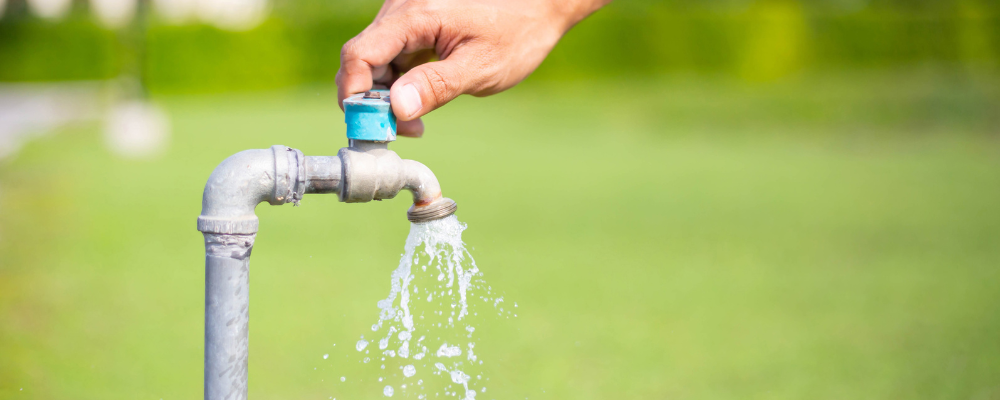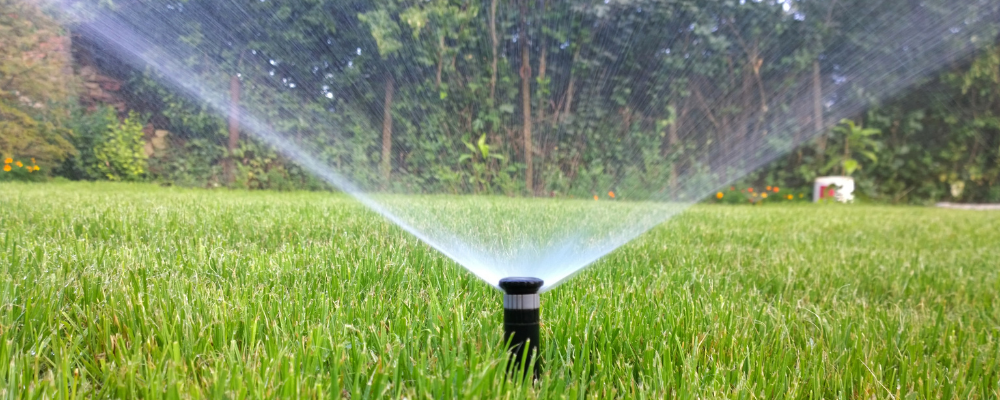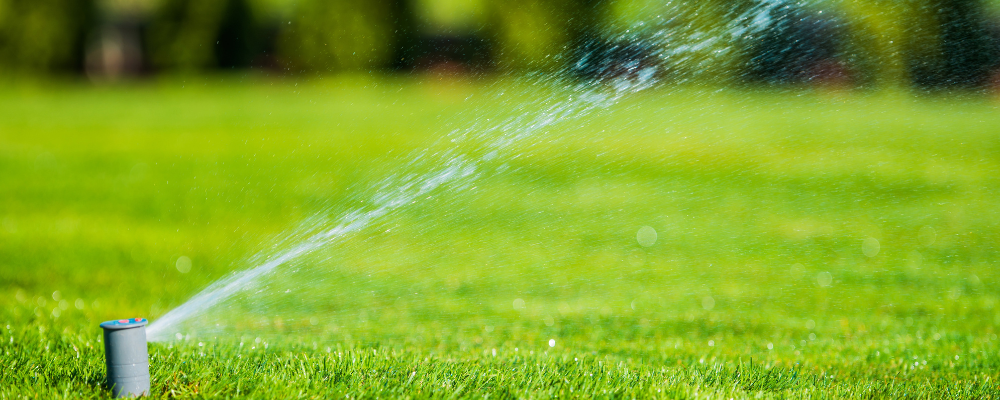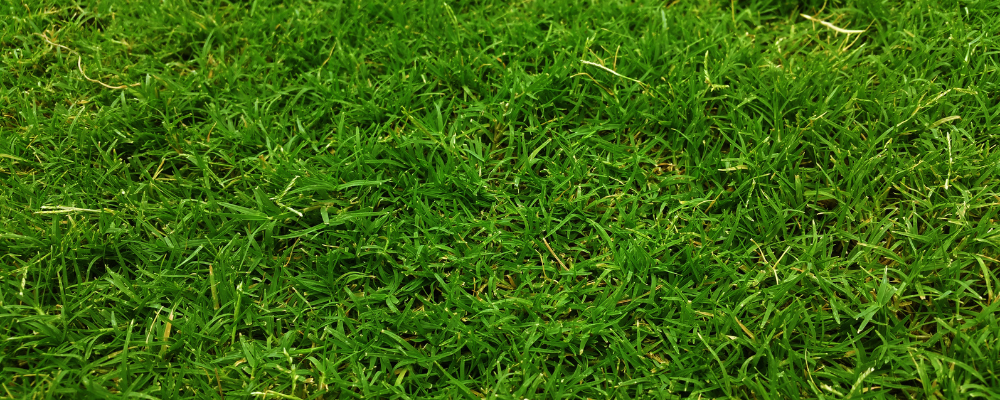No End in Sight
Written by Carol Welch

Water conservation is no longer a topic for casual conversation, its mandatory education for drought weary Texans. In North Texas we are living in Stage 3 and planning for Stage 4 water restrictions. For most of us, that puts damage control at the top of the priority list. We aren?t just looking at the calendar to see if we can water today, we?re looking at our landscape and wondering what will survive the summer months ahead.
When I drive through my neighborhood, I see many who have already started to implement new strategies. I see flowerbeds with a heavy layer of mulch that will hold moisture in the soil and insulate it from the coming heat. I see water-hungry landscape plants being replaced by drought tolerant Texas Superstar varieties. I also see a greater use of native plants and those that have adapted over the years to our hot, dry Texas weather.
If you have been planning ahead, you have probably already considered these options. You may also have installed a drip irrigation system. This is the best, most efficient way to water your landscape. Stage 3 watering must be done in the late evening or early morning and only with a drip system, a hose, or a bucket. A drip irrigation system will reduce water usage by 50%, by accurately applying water to the base of each plant, allowing every plant to receive the maximum benefit of every drop.

All of these changes are a step in the right direction, but they fail to address the larger issue of the lawn. Lawns are an American obsession. We have been lulled into believing that a ?golf course green? lawn is an essential part of our landscape, and that water is the answer for just about every issue. We pour our time, our energy, and our money into our turfgrass in an effort to achieve that perfect shade of green, and then complain because we have to mow it. It is a uniquely American dilemma ? a trend that will inevitably fall by the wayside as water demands continue to rise. When it comes to a choice between a drink of water or green grass in your yard, the decision becomes simple; but not necessarily less painful.
Now is the time to re-evaluate our priorities and consider a redesign of our water hungry landscapes. Now more than ever, we need to plan ahead and prepare for the unavoidable. We need to adapt our landscape to withstand the natural environment. We need to give up the fantasy island dream and consider other viable and more successful alternatives.
In very practical terms, we are going to have to consider downsizing the lawn and begin learning about drought tolerant grasses. We?re going to have to prioritize the various elements in our landscape and
make some hard choices. Current recommendations from Texas A&M AgriLife Extension are that a lawn should cover not more than one-third of the landscape. For most of us, that is a significant reduction and a hard pill to swallow. So let?s step back and take it one step at a time.

There are several things you can do to reduce your lawn without sacrificing curb appeal or outdoor comfort. Areas that are shaded by trees are a good place to start. As the trees grow and the canopy spreads, grass will continue to get thinner and become more difficult to grow. Most grasses, even shade tolerant grasses, require 4-6 hours of sun each day in order to thrive. Consider transforming these areas into a shaded sitting area. Build a deck, lay rocks, or put down a heavy layer of mulch for a more natural look. You might also consider a shade bed with drought tolerant plants such as dwarf wax myrtle, aucuba, cast iron plant, Turk?s cap, artemesia, or ground covers like vinca major, mondo grass, English ivy, Asian jasmine and purple winter creeper euonymus. Consider the shrub beds next your house. Lose the straight lines and square edges and expand the beds out into the lawn area. Use a gently curving edge that will be easier to mow around, and then supplement your shrub row with Texas Superstars or Earthkind Roses. These plants are hardy in our Texas environment and require much less water than most plants. Go to www.txsmartscape.com for a searchable database of 230 recommended plants for North Central Texas. Visit our office, stroll through the demonstration garden, and purchase the real dirt, a gardening handbook written by Master Gardeners and designed particularly for Parker County. There you will find a wealth of information about transforming your lawn into a water-conserving landscape.
If you have a turfgrass that requires a good bit of water in order to thrive, consider replacing it with a variety that is hardier in our area. Believe it or not, it is actually possible to maintain a healthy turfgrass that has a thick cover, is weed-free, and requires no supplemental water. In fact, bermudagrass is one of those grasses. If you have a bermudagrass lawn and are supplementing it with water once each week, you may be overwatering it and possibly creating additional problems as well. According to current research, bermudagrass requires less than 20 inches of rain each year. Parker County averages 33 inches of rain annually, which more than meets that need. See the chart below for water requirements of other common turfgrasses.

Native Buffalo Grass Lawn
The biggest misconception we have about grass is its color. Healthy grass that is receiving water on a weekly basis is green, but it is perfectly normal for healthy grass to go dormant in the heat of summer when rain is scarce (not true for St. Augustine, which will usually die when allowed to go dormant). The straw color of dormant grass is also a healthy color. And according to our A&M researchers, that?s a fact. Here are some more facts that may help to adjust your perspective.
Fact: Over-watering a lawn will compromise the roots causing them to be shallow and poorly equipped to survive drought. Learn to recognize a thirsty lawn.
It is perfectly normal for grass to show signs of wilt on a hot, sunny afternoon; but what does it look like in the morning? That is the important question. If your lawn shows signs of wilt in the morning, then it?s time to water. When you walk across a thirsty lawn, your footprints will remain in the grass; and many blades of grass will fold in half lengthwise. These are signs of a lawn that doesn?t have enough moisture available in the soil.
When watering the lawn, you want to apply water only to the area above the root zone; so pay attention. Apply water at a rate that does not allow for run-off. If your soil is very dry, run-off may occur very quickly. Apply water in short increments and allow the water to completely soak in before the next cycle. Over a period of an hour or more, apply enough water so that it soaks in at least four to six inches deep. Watering deeply and than allowing the soil to dry out between watering will encourage deep healthy roots. Such roots will allow your lawn to survive longer periods without supplemental water and will prepare it for dormancy during the summer.
Nitrogen and phosphorus are two critical elements to consider for your lawn. Nitrogen is the element that brings about that golf course shade of green, but it is also the element that will completely undermine your watering efforts. A little bit of green shoot growth is a good thing, but excessive green growth will compromise the roots of your lawn. It will also cause an increased need for mowing, and an increased uptake of moisture from the soil. Choosing a fertilizer that contains nitrogen in a slow-release formula will reduce the immediate impact of nitrogen, and will provide nutrients to your grass over a longer period of time.
Phosphorus promotes healthy root growth, but in Parker County, we have a unique situation. Phosphorus is already present in the soil in most areas across the county. If this is the case in your yard, you will not be helping your lawn by applying more. Healthy lawns need a balance of phosphorus , nitrogen, and potassium in order to survive the hot, dry summers in Parker County. This is why a soil test is so highly recommended in our area. This test will give you specific information about the nutrients in your soil and give you the best opportunity to produce a healthy, drought tolerant lawn.
A third component to consider in fertilizing your lawn is iron. A supplemental application of iron can sometimes provide a desirable shade of green, and has been shown to increase turfgrass roots. In fact, some of the fertilizers are including a greater percentage of iron in the mixture, so check the label carefully.
Most people don?t think about mowing when they are looking at a summer with little water, but mowing is an important element to consider. Grass that is mowed too short will require more water to recover. But grass that is mowed infrequently and allowed to grow taller will result in thinner turf and a weaker root system. Somewhere in between these two extremes is a better solution for your lawn. So where do you start?
First, sharpen your blades. A dull blade will rip at the blades of grass rather than cut them. The rough and ragged edges will lose water more quickly than a clean cut. Second, keep a frequent and regular pattern for mowing your lawn. Two or three times a week is ideal. Mowing frequently will encourage a thick and healthy lawn. This lawn will strangle out stray weeds and will provide shade for the soil. A shaded soil will conserve moisture, and will discourage weed seeds from sprouting and thriving. Third, set your mower deck at the highest recommended setting for your type of grass. See the chart below for recommended mower settings for turfgrasses. These three practices will enable your grass to thrive on less water and maintain a healthy appearance even in our drought situation.
According to the turfgrass experts at A&M, it is normal for adapted Texas turfgrasses to go completely dormant during the summer. Texas hardy grasses, if properly maintained, will provide complete cover, remain weed-free, and provide a usable surface for any yard. The grass will remain green when water is available, and will turn a healthy shade of straw as the summer progresses. The grass will remain dormant until sufficient rains begin in the fall, allowing the grass to green again.
With these facts under your belt, you should be able to begin the process of preparing your yard for more hot, dry weather. Don?t let the absence of irrigation be an excuse for poor lawns and sad yards. Take the information and put it to good use; and you, too can have a Texas hardy landscape.
Type of Grass Deck Setting Rainfall
(in. / year)
St Augustine 3 in. > 30 in.
Bermudagrass 2 in > 20 in.
Zoysia 2 in. > 25 in.
Tall Fescue 3 in. > 40 in.
Buffalograss 3 in. > 10 in.
